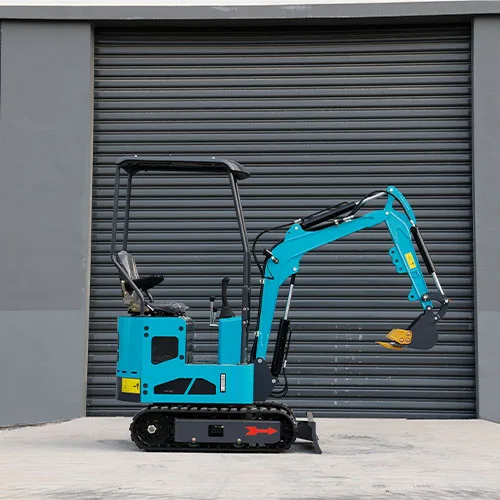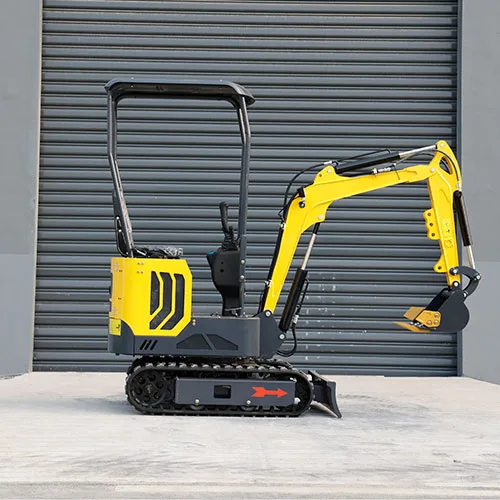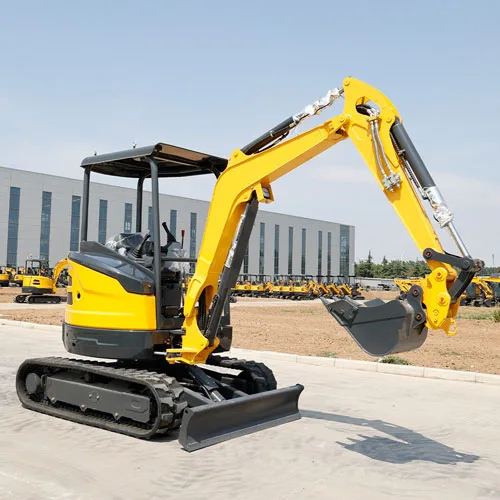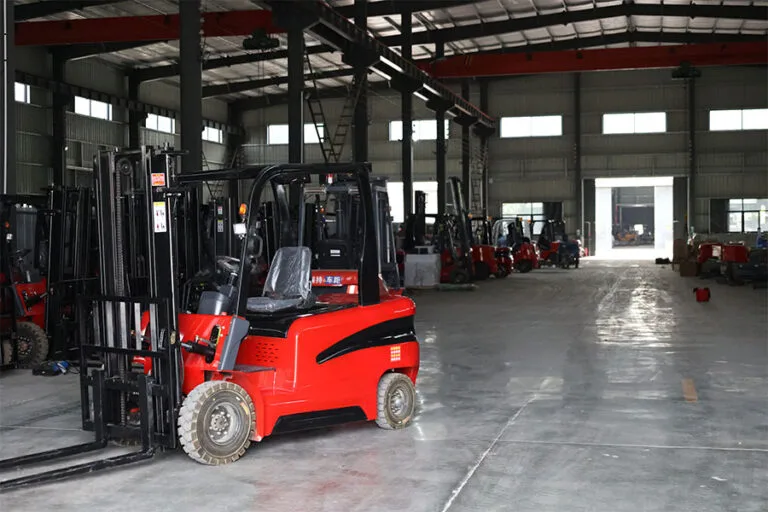I’m thrilled to have you here! Before we dive into the content, let’s stay connected. Join me on my social media platforms for more insights, community engagement, and regular updates. Here’s where you can find me:
📌 Facebook: Shandong Huaying International Trade Co., Ltd.
Now, let’s embark on this journey together. I hope you find the content here not only insightful and engaging but also valuable to your interests. Let’s learn, grow, and connect!
Table of Contents
Introduction

A small tracked excavator has become a game-changer in modern construction, agriculture, utility repair, and landscaping. Its compact size, exceptional maneuverability, and enhanced digging capabilities make it a favorite for job sites where space is tight, and precision is crucial. But owning or operating one isn’t just about buying the right machine—it’s about knowing how to get the most from it.
Whether you’re a seasoned contractor, fleet manager, or first-time buyer, understanding how to operate, maintain, and maximize the potential of a small tracked excavator can dramatically impact your productivity and cost efficiency.
In this article, we’ll explore six must-know tips that cover everything from operational nuances to maintenance, terrain matching, cost efficiency, and more. These tips are designed to help you make the most informed decisions and extend the lifecycle of your investment in a small tracked excavator.
Tip 1: Understand the Operational Capabilities of a Small Tracked Excavator
Before you even start digging, it’s important to know what your small tracked excavator can and cannot do. While the machine may appear compact, its strength lies in its versatility and reach.
Key operational aspects include:
- Swing radius: Smaller swing radiuses allow better performance in confined areas.
- Track width and ground pressure: These determine the excavator’s balance and ability to work on soft ground.
- Lift capacity vs. operating weight: Understanding this ratio helps prevent overloading and tipping.
Unlike larger machines, a small tracked excavator can work in alleyways, backyards, and indoor construction sites without sacrificing too much digging depth. It’s often used for trenching, grading, light demolition, utility repairs, and even indoor excavation with the right attachments.
Investing time in understanding these capabilities helps prevent misuse and mechanical failure while improving safety and operator efficiency.
Tip 2: Choose the Right Attachments for Small Tracked Excavator Tasks

A small tracked excavator’s true value lies in its flexibility. By choosing the right attachments, you can turn a single machine into a multi-tool workhorse capable of handling dozens of tasks.
Common attachments include:
- Buckets: Narrow trenching buckets, grading buckets, and tilt buckets
- Augers: Ideal for drilling post holes or planting trees
- Hydraulic breakers: Used for breaking up concrete and asphalt
- Grapples: Useful for demolition, landscaping, and waste management
- Rippers and thumbs: For digging through frozen ground or manipulating large rocks
Selecting the appropriate attachment can double or even triple productivity, especially on smaller job sites. Always ensure compatibility between your machine’s hydraulic system and the attachment’s flow requirements.
Also, check if your small tracked excavator supports quick couplers, which allow operators to change attachments rapidly without needing additional tools or leaving the cab.
Tip 3: Prioritize Routine Maintenance and Inspections
Even the best equipment will break down prematurely if not maintained properly. A small tracked excavator needs frequent inspections and preventative maintenance to ensure it performs reliably on every job site.
Daily, Weekly, and Monthly Maintenance Tips:
- Daily Checks: Hydraulic fluid levels, track tension, oil levels, and engine coolant
- Weekly Tasks: Cleaning the air filter, greasing all pivot points, and inspecting hoses for leaks
- Monthly Tasks: Change filters, tighten bolts, and inspect the undercarriage thoroughly
A well-maintained small tracked excavator operates more efficiently, lasts longer, and reduces unexpected downtime. Most modern machines also include easy-access service panels to help streamline this routine.
Failure to follow these guidelines could void your warranty or lead to costly repairs. Create a maintenance checklist and logbook for each machine to ensure nothing is overlooked.
Tip 4: Train Operators for Efficiency and Safety When Using a Small Tracked Excavator

One of the most overlooked aspects of managing a small tracked excavator is operator training. Even experienced machinery handlers can make costly mistakes if they don’t understand the unique handling features and limitations of smaller excavators.
Key Focus Areas for Training:
- Smooth Controls: Teaching operators to make deliberate, fluid movements minimizes wear on the hydraulic system and attachments.
- Understanding Load Limits: Small tracked excavators can become unstable if overloaded or operated on uneven terrain.
- Track Management: Operators should learn how to reduce unnecessary wear on rubber tracks, such as avoiding sharp pivots or extended travel at full speed.
- Jobsite Awareness: Because these machines are compact and often used in tight spaces, situational awareness is crucial to avoid collisions with nearby workers or structures.
A well-trained operator doesn’t just extend the life of the machine—they also improve job site safety and workflow efficiency. Investing in training pays off by reducing maintenance needs and avoiding unnecessary delays due to operator error.
Tip 5: Maximize Productivity with Proper Terrain Matching
Not every small tracked excavator is built for every jobsite. Understanding how your machine interacts with different types of terrain can prevent accidents, stuck equipment, or even tipping over.
Terrain Types and Best Practices:
- Soft or muddy ground: Use wider tracks or steel tracks with added flotation features. Keep the excavator’s center of gravity low.
- Gravel or rocky terrain: Choose machines with reinforced undercarriages and heavy-duty tracks to prevent punctures.
- Sloped areas: Always work perpendicular to the slope whenever possible. Avoid operating sideways on steep inclines.
Also consider how your small tracked excavator’s weight affects ground pressure. Machines with lower ground pressure are ideal for turf or finished landscaping projects, as they minimize surface damage.
By choosing the right model and track style for your terrain, you’ll not only increase productivity but also reduce the need for post-excavation repairs and rework.
Tip 6: Evaluate Cost-Efficiency and Long-Term Value

Owning a small tracked excavator is not just about upfront cost—it’s about long-term value. Making the right investment means evaluating total cost of ownership (TCO), which includes fuel efficiency, maintenance, resale value, and worksite adaptability.
Here are a few ways to measure value beyond the sticker price:
- Fuel Efficiency: Smaller engines can reduce daily operating costs by 20% or more compared to larger excavators.
- Versatility: A machine that supports a wide variety of attachments eliminates the need to rent or purchase separate tools.
- Resale Potential: Well-maintained small tracked excavators often retain 50-70% of their value after 3–5 years.
- Warranty and Service Support: Choosing a model with a solid service network ensures quick access to parts and professional support.
The goal is to ensure your machine is generating more value per hour than it costs to operate. Regular performance reviews and utilization tracking can help you make data-driven decisions about future upgrades or replacements.
Comparative Table of Small Tracked Excavator Specifications
When evaluating a small tracked excavator, it’s essential to compare the key specifications that impact performance, versatility, and job site suitability. Below is a generalized comparison table outlining the most important features to consider across different models:
| Specification | Lightweight Model | Mid-Size Model | High-Capacity Model |
|---|---|---|---|
| Operating Weight | Low | Moderate | Higher |
| Engine Power | Basic | Enhanced | Powerful |
| Maximum Digging Depth | Shallow | Medium | Deep |
| Track Width | Narrow | Standard | Wide |
| Hydraulic Flow Capacity | Lower | Balanced | High |
| Attachment Compatibility | Limited | Versatile | Extensive |
| Ideal Terrain | Soft/Firm | Mixed-use | Rough/Uneven |
| Maneuverability | Excellent | Good | Moderate |
| Suitable Applications | Residential/Landscaping | Utility/Construction | Industrial/Demolition |
This table helps summarize the trade-offs when selecting a small tracked excavator based on your specific operational needs. Lighter models are easier to transport and ideal for delicate surfaces, while larger versions offer deeper digging capabilities and stronger hydraulic systems for demanding jobs.
Conclusion
When used effectively, a small tracked excavator becomes an indispensable part of any earthmoving or utility project. The key is in selecting the right model for your needs, understanding how it fits into your workflow, and committing to regular upkeep and safe operation.
This blog covered six essential tips—from understanding job-site compatibility to choosing durable attachments and ensuring operator comfort—that together form a holistic approach to maximizing machine performance.
With proper planning and a focus on best practices, any investment in a small tracked excavator can yield long-term productivity, cost savings, and operational flexibility.
FAQ
What makes a small tracked excavator different from a wheeled version?
Small tracked excavators use rubber or steel tracks, offering better traction and stability on soft or uneven ground. They are preferred in off-road, muddy, or inclined conditions, unlike wheeled versions which perform better on paved surfaces.
How do I choose the right bucket for my small tracked excavator?
The right bucket depends on the job. Narrow trenching buckets are ideal for pipe laying, while wide grading buckets help in landscaping and site leveling. Make sure your excavator’s hydraulic system supports the bucket size and type.
Can I tow a small tracked excavator with a pickup truck?
In most cases, compact models under a certain weight threshold can be towed using a heavy-duty pickup and a suitable trailer. Always consult the machine’s specs and local transport regulations before towing.
Are small tracked excavators fuel-efficient?
Yes. Most are designed with modern, fuel-efficient engines and idle-reduction features. Fuel efficiency depends on usage intensity, terrain, and attachment type.
What is the typical service life of a small tracked excavator?
With proper maintenance, a high-quality small tracked excavator can easily exceed 8,000 to 10,000 hours of operation. Lifespan depends on work conditions and how well the machine is cared for.



